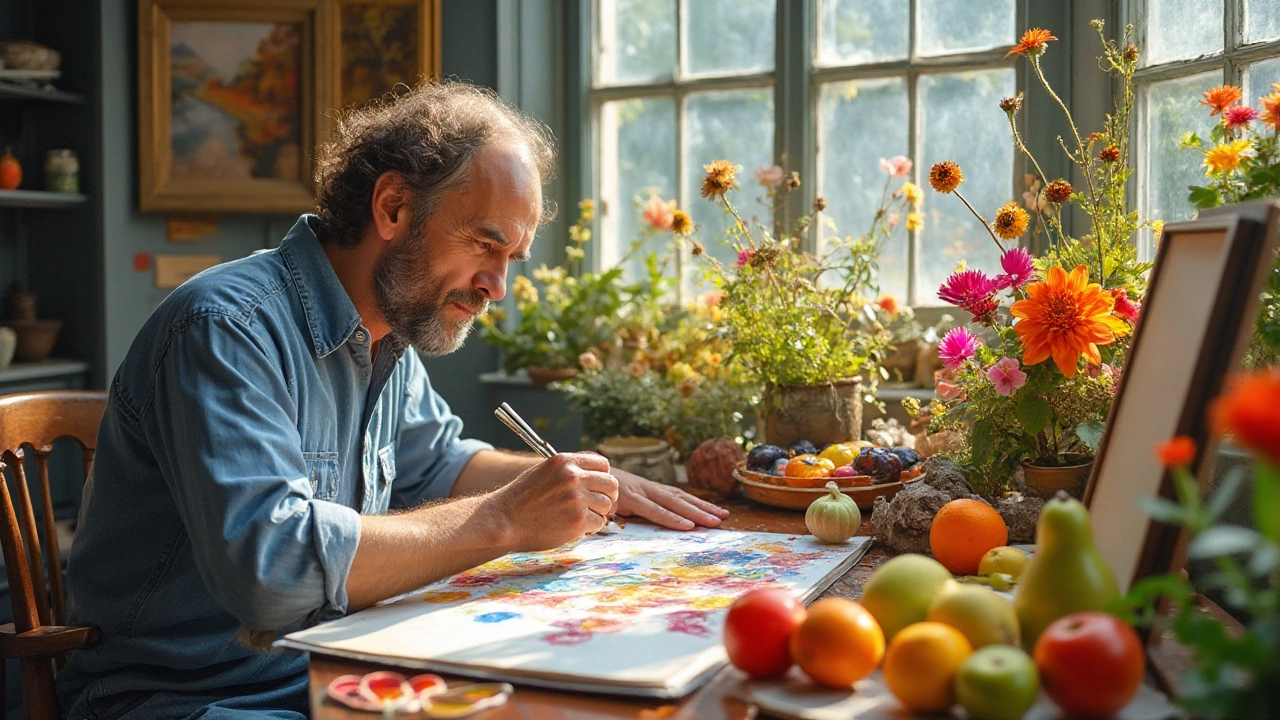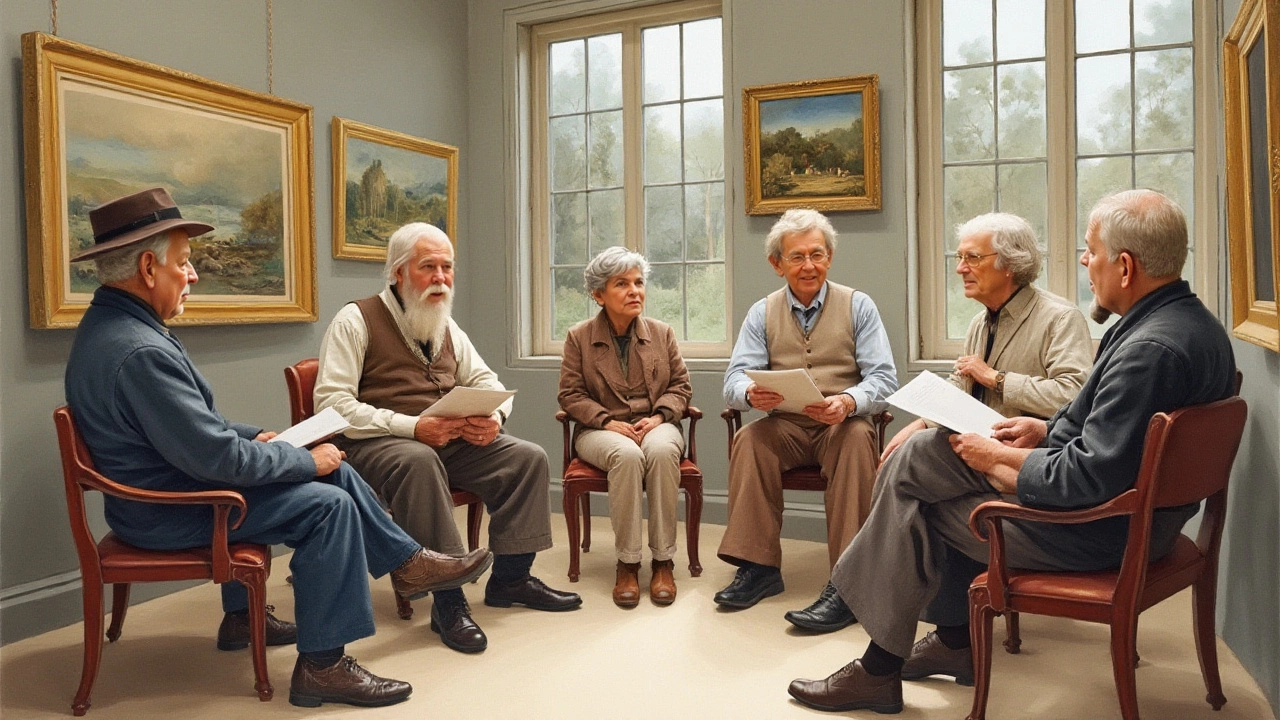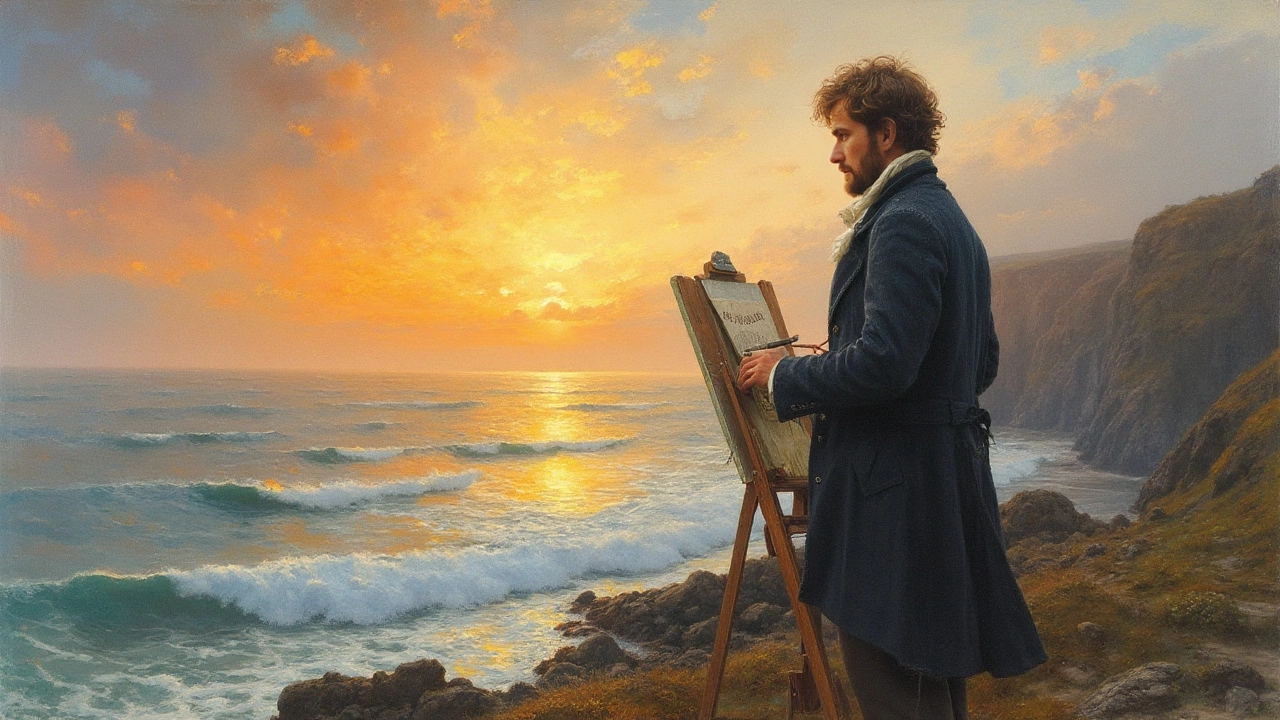Watercolor painting, with its enchanting blend of color and transparency, has captured the hearts of artists and art lovers for generations. This medium, known for its unpredictable nature and delicate beauty, requires both skill and creativity. Many illustrious artists have dabbled in watercolor, but a few stand out for their exceptional contributions.
In the world of fine art, certain names have become synonymous with watercolor mastery. These artists not only excelled in capturing the essence of their subjects but also pushed the boundaries of watercolor techniques to create timeless pieces. Exploring these artists' journeys offers a fascinating glimpse into the vibrant history of watercolor art. For those new to the craft, understanding their work can provide inspiration and guidance on their own creative path.
- The Evolution of Watercolor Art
- Pioneers of Watercolor Painting
- Masterful Techniques of Famous Artists
- Impact of Watercolor on Modern Art
- Tips for Aspiring Watercolor Painters
The Evolution of Watercolor Art
The journey of watercolor art is a tale interwoven with the advancement of artistic expression itself. Ancient Egyptians are believed to be early adapters, using rudimentary water-based paints to adorn papyrus scrolls with vibrant images. However, watercolor as a recognized art form began to flourish during the Renaissance, when artists like Albrecht Dürer harnessed its potential for creating detailed and luminous art. Dürer, admired for his precise lines and delicate washes, laid a foundational stone for watercolor's evolution.
Watercolor paint, composed of pigments suspended in a water-soluble vehicle, offered a unique transparency that oil and tempera could not. This distinctive characteristic intrigued artists across Europe. During the 18th century in Britain, watercolor found its footing as a medium for topographical paintings. These works resonated with adventurers and travelers who sought to capture new landscapes, leading to an increase in demand.
"Watercolor is the perfect medium for capturing nature's fleeting moments, embracing its unpredictability," a sentiment echoed by many art historians.
The golden age of watercolor in Britain saw its rise to prominence, accentuated by the works of renowned figures such as Thomas Girtin and Joseph Mallord William Turner. Girtin, a contemporary of Turner, was instrumental in the transformation of watercolor from a tool for mere sketches to a respected and standalone art form. His ability to depict the vastness of landscapes with subtle tones rivaled oil paintings and set the stage for Turner's groundbreaking work. Turner, sometimes dubbed the 'painter of light,' revolutionized watercolor with his emotive use of color and dramatic compositions.
As the 19th century unfolded, watercolor art traversed the Atlantic to America, capturing the imaginations of artists like Winslow Homer and John Singer Sargent. This period gave rise to a diverse range of styles, as American artists adapted European techniques to reflect their cultural landscapes. The medium was embraced in myriad ways—from bold, fluid washes to intricate miniatures—showcasing its versatility. Homer's works, with their vigorous brushstrokes, captured the essence of rural life and the dynamic beauty of natural scenes.
Around the globe, watercolor painting continued to evolve through the 20th century and into the modern era. It inspired abstract artists who appreciated its spontaneous nature, offering both challenges and freedoms. The medium's flexible application made it appealing to contemporary artists seeking to blur traditional boundaries. Today, watercolor remains a vital part of the artistic repertoire, cherished for its ability to render the delicate interplay of light and color with striking realism.
To grasp watercolor's full impact, it's essential to explore its vast historical canvas, each era and artist adding a new layer to its rich tapestry. As young painters pick up their brushes, they join a lineage that spans centuries—continuing to push the medium even further into unexplored territories.
Pioneers of Watercolor Painting
Delving into the world of watercolor artists, one cannot overlook the influence of pioneering spirits who embraced this medium in its early days, redefining painting as an art form. These famous painters not only experimented with watercolor for its tactile and visual allure but also laid the groundwork for the expressive potential and freedom it now represents in the art world. Among these early innovators, Thomas Girtin is often hailed as a key figure. His ability to capture Britain’s countryside landscapes in evocative hues of watercolor defined much of his era’s artistic trends. Girtin’s friend and sometimes rival, the legendary Joseph Mallord William Turner, took these foundations and soared. Turner’s work transcended the ordinary through atmospheric compositions that captured the sublime power of nature, setting a new standard for what watercolor could achieve.
"Turner was a wonderful artist in-demand, both for his vivid imagination and capacity to capture the sea’s immense energy and beauty," noted an art historian at the Tate Gallery.
Despite their innovations, these early watercolorists often faced marginalization in the broader sphere dominated by oil paintings. Yet, this didn't deter figures like John Robert Cozens, whose works hinted at the emotional resonance that watercolors could evoke. Cozens’ paintings, though muted in color, spoke in depth, stirring the viewer’s imagination with his skillful treatment of light and shadow. The painter succeeded in capturing the English landscape’s pastoral charm and melancholic beauty, earning him a rightful place among the founders of watercolor techniques. As the practice spread, Paul Sandby emerged, widely recognized as one of the 'fathers of English watercolor.' His accurate topographical surveys and picturesque landscapes played a pivotal role in establishing watercolor as a respected art form across Europe.
The enthusiasm and expertise of these early adopters sparked a watercolor movement, inspiring artists worldwide. In France, Eugène Delacroix explored the medium, adopting watercolor for its expedience and ability to convey immediate emotion. This shift from oil offered a new realm of artistic spontaneity, reflected in Delacroix’s bold experiments with light and color. His approach influenced numerous successional artists who saw in watercolor a tool for capturing fleeting moments with vivid intimacy. Across the ocean, American artists such as Winslow Homer drew from this lineage. Homer embraced watercolor as an outdoor medium, depicting the New England coastline with a realism that was as robust as it was breathtaking. These famous watercolor painters redefined the artistic possibilities of their era, blurring lines between fine art and nature's veracity.
With time, the pioneering spirit of early watercolorists has endured, paving the way for modern exploration in watercolor techniques. Their legacy is visible not just in the art museums and galleries worldwide but in the very attitude with which contemporary artists approach the medium today. By understanding these origins, the inherent challenges early artists faced, and the resilient creativity they exhibited despite those obstacles, one can truly appreciate the transformations brought about by these artistic revolutionaries. Whether inspired by their landscapes, their methodology, or their dedication to craft, the narrative of these pioneers continues to resonate, inviting new generations to pick up where their brushes left off.

Masterful Techniques of Famous Artists
Exploring the watercolor techniques of renowned artists is like diving into the depths of a creative ocean. These artists managed to capture the fluid essence of watercolors with such finesse that their paintings continue to resonate throughout art history. Take Joseph Mallord William Turner, for instance, whose mastery of light and atmosphere threw open a new realm of expressive possibilities within the watercolor medium. Turner's skill lay in using minimal brushstrokes to evoke dramatic landscapes, transforming the subtle gradations of water and pigment into breathtaking vistas. His works, such as 'The Blue Rigi,' demonstrate an ethereal quality where light seems to dance across the paper, a technique that rivaled oils in its vividness and emotional depth.
John Singer Sargent, another giant in the world of famous painters, displayed an incredible fluency with watercolor, allowing him to render exquisite portraits and scenes with both precision and spontaneity. His hallmark was a confident application of paint, often using rapid strokes to capture the fleeting spirit of his subjects. Sargent's 'Carnation, Lily, Lily, Rose' is an exemplary showcase of lively brushwork and a masterful understanding of light and shadow. According to artist and critic John Ruskin, "Sargent's watercolors are nothing short of genius, embodying a vibrant immediacy that brings the canvas to life."
On a different note, the serene and introspective works of Winslow Homer exhibit watercolor's ability to convey the tranquil beauty of natural settings and human solitude. Homer's technique involved laying down washes to establish a foundation and then using dry brush for textures and details. His deliberate layering allowed for deeper colors and subtle variations in transparency, enriching both the composition and the story within his pieces. One can notice this meticulous yet fluid approach in 'The Gulf Stream,' where the play of water and sky bespeaks both turmoil and tranquility.
The modern influence of watercolor art was significantly shaped by artists like Paul Klee, who preferred abstract expression and used watercolors to explore color theory and psychological depth. Klee’s innovative approach involved juxtaposing soft washes with tightly controlled lines, creating works that oscillate between chaos and order. Klee once said, "Color possesses me... it will always express something beyond itself," embodying the ephemeral yet expressive nature of watercolors.
Finally, it's important to note that while each of these artists had their unique styles, they shared common ground in their exploration and mastery of color washes, dynamic strokes, and the contrast of light and shadow. Their works invite aspiring artists to embrace experimentation and lose and find themselves in the oscillation of hues and shades. For those wishing to follow in their footsteps, it is crucial to understand the characteristics of watercolor paints, the paper it dances on, and the brushes that guide it to life. Much like the masters before, finding your way in this medium often means keeping a light touch and an open mind.
Impact of Watercolor on Modern Art
The ethereal charm and unique fluidity of watercolor painting have had a profound influence on modern art, transforming perceptions and techniques across diverse creative domains. Watercolor's ability to capture light and texture with delicate ease appeals to artists who seek spontaneous expression. The transparency and luminosity of watercolor have inspired a shift from the rigid structures of traditional oil painting, allowing for a more immediate and, at times, improvisational approach. Modern artists appreciate the flexibility and unpredictability that watercolor offers, making it an ideal medium for conveying emotion and exploring abstract concepts.
One remarkable figure who illustrates the transformative potential of watercolor within modern art is Paul Klee. Known for his inventive use of color and form, Klee embraced watercolor for its versatility, employing it to express intricate ideas and personal reflections. His works often embodied a sense of playful geometry and vibrant color harmonies, which foregrounded watercolor's capability to transcend traditional boundaries. The serene yet powerful expression found in his paintings showcases watercolor's distinctive role in bridging the gap between representation and abstraction in the 20th century.
"Color is the place where our brain and the universe meet." — Paul Klee
The late 19th and early 20th centuries witnessed a myriad of artistic movements that capitalized on watercolor's unique characteristics. Impressionists, for instance, employed watercolor to capture fleeting moments and the interplay of natural light. The immediacy and translucence of the medium enabled artists such as Claude Monet to impart a vivid depiction of their surroundings, offering viewers a glimpse into the lush landscapes and ephemeral beauty of nature. This influence extended beyond Impressionism, finding a home in abstract expressionist circles, where artists like Sam Francis embraced the random fluidity of watercolor to evoke visceral emotions and subconscious imagery.
Today, watercolor maintains its allure, its impact evident in contemporary art galleries worldwide. Modern painters are increasingly drawn to the medium to articulate innovative visions, layering colors to create depth and leveraging watercolor’s spontaneity to infuse their art with an organic, powerful vitality. This ongoing fascination is reflected in the growing number of watercolor exhibitions, attracting art enthusiasts eager to witness the transformation of this historic medium into a catalyst for contemporary creativity. From bold washes to subtle tints, watercolor persists as a favorite among artists seeking to explore complex ideas and emotions, reinforcing its timeless relevance in the vibrant tapestry of modern art.
The medium's versatile application is further demonstrated in various fields such as fashion illustration and urban sketching. Young artists and designers often utilize watercolor to convey movement and texture in their work, embracing its adaptability for rendering everything from fabric drape to cityscapes. These applications cement watercolor's role not just in fine art, but across numerous creative industries. The ongoing fusion of traditional techniques with digital advancements continues to expand watercolor's possibilities, confirming its significant impact and lasting appeal in the realm of modern art.

Tips for Aspiring Watercolor Painters
Diving into the world of watercolor painting can be an exhilarating journey, offering endless possibilities to express creativity on paper. Starting out may feel daunting, with myriad hues, brushes, and techniques to explore. The first and foremost step is to understand the medium itself. Watercolor is celebrated for its translucency and luminescent quality, which sets it apart from other painting media. The key to mastering watercolor lies in understanding the balance between water and pigment, which can vary greatly depending on the desired outcome. Experimentation with this balance will yield unique textures and effects, helping blooming artists find their own style and voice.
Choosing the right materials is crucial for anyone stepping into watercolor painting. Investing in high-quality paints can make a significant difference. Professional-grade watercolors offer richer pigments and better blending capabilities, though they might be pricier than student-grade ones. Selecting the right paper is just as important, as the texture and absorbency will affect how colors flow and mix. Cold-pressed paper is versatile and commonly chosen for its moderate texture, whereas hot-pressed paper offers a smooth finish ideal for detailed work. Alongside this, an assortment of brushes varying in size and shape will enable artists to explore different strokes and techniques, from broad sweeps to intricate details.
Understanding color theory and practicing color mixing is another vital aspect. Watercolor artists must be adept at mixing colors on the palette and on paper, as layering is a crucial technique that watercolor relies upon. Each layer of color adds depth and dimension, allowing artists to capture the subtleties of light and shade in their work. Observing how colors change as they dry gives insight into this dynamic process. It's essential to practice mixing primary colors to create a spectrum of hues, and thoughtfully apply these in their artwork to highlight and shadow their subjects effectively.
Every artist faces challenges, especially when learning something new. It's important to approach watercolor painting with patience and perseverance. Mistakes are valuable learning moments, and with practice, aspiring artists can improve their technique and confidence. Studying the works of renowned watercolor painters like J.M.W. Turner or Winslow Homer can provide inspiration and insight into advanced techniques. Attending workshops or online courses can also aid in developing new skills and meeting fellow artists.
As artists grow more comfortable with their tools, they can begin to experiment with bold techniques. Wet-on-wet and wet-on-dry methods allow different control over the pigment spread. Wet-on-wet creates soft, diffused edges and is perfect for backgrounds and skies in landscapes. On the other hand, wet-on-dry offers precision for sharper details. Moreover, mastering the art of layering transparent washes builds up intense colors and textures, adding a three-dimensional feel to the painting.
For those embarking on this artistic adventure, embracing a spirit of experimentation is essential. Every brushstroke is a step towards honing skills and developing a distinctive style. As Picasso wisely suggested, "Every artist was first an amateur." By embracing challenges, learning from past masters, and continuously practicing, any aspiring watercolor artist can unlock their full potential and create art that resonates not only visually but also emotionally.

